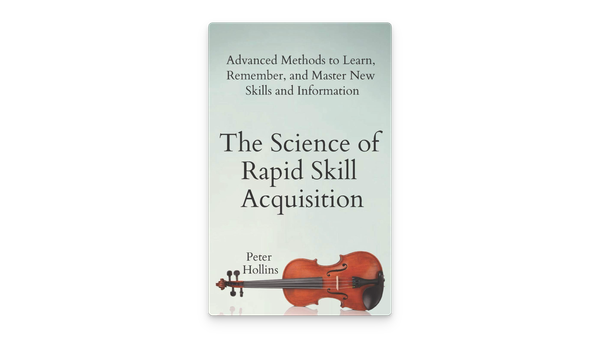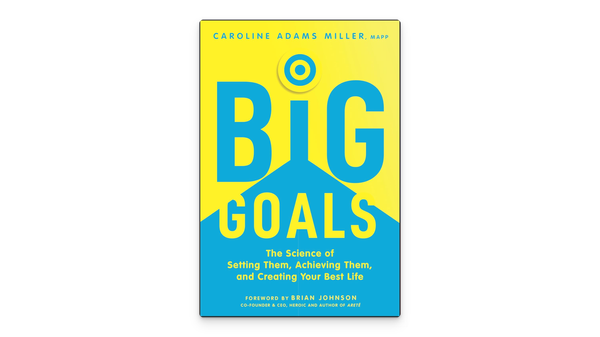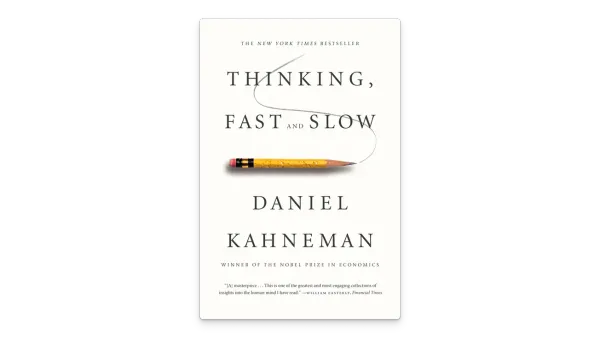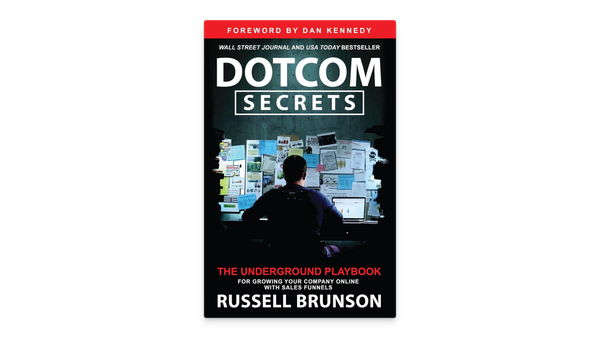Creative Acts for Curious People
What’s in it for me? Boost your creativity and confidence using tools taught at Stanford’s d.school.
What comes to mind when you hear the word design? You may be thinking of a particular profession or field, but actually, anyone can be a designer.
At Stanford’s d.school, design is taught as a creative approach to solving problems, with the ultimate goal of improving people's lives. If you’ve ever been curious about learning about systems, or dreamed about how the world could work differently, you were thinking about design.
In the following summary, you’ll learn how to apply some of the insights and tools about design and creativity taught at the world-renowned design institute. Using assignments from the school’s history, you’ll also refine your ability to address complex challenges in your company, community, or even at home.
In these summary, you’ll find out
- why not knowing which problem you want to focus on propels creative impact;
- how a zombie apocalypse can help foster trust in teams; and
- why dips in productivity are actually good for learning.
Design is a problem-solving approach involving observation, thinking, feeling, and action.
Imagine going to the gym every day – but each day, you only work out one side of your body. After a few weeks, one side is strong and muscly, while the other side stays weak. This may sound absurd, but it’s happening in educational training.
In school, most students are taught to focus on two of the skills necessary for creativity; thinking and observing. And not so much on the other two; feeling and doing. But just as you need to work out your full body for balanced physical strength, you need more than one set of skills to have impactful creative action.
That’s why Stanford University’s d.school is dedicated to instructing students on how to integrate all of their creative skill sets into the problem-solving process.
The key message here is: Design is a problem-solving approach involving observation, thinking, feeling, and action.
Every year thousands of people take to the d.school’s classrooms to be taught by faculty working in fields from medicine to education and philanthropy. They explore unconventional tools for learning and how to think like a designer.
The d.school views design as a dance between learning and problem-solving to improve people's lives. Its mission is to teach students how to develop completely novel solutions to complex problems. This way of thinking about design was pioneered by the Hungarian painter László Moholy-Nagy in the 1940s, who viewed design as an “attitude of resourcefulness and inventiveness.”
These days, in an era marked by constant flux, learning to be resourceful and inventive is more important than ever. As the world continues to adapt to unprecedented technologies, climate change, and more recently, a global pandemic, environments are constantly shifting.
This means you’re constantly relearning the world around you, and redesigning your life accordingly. Some have to reshape their family’s daily routine, while others have to reframe a whole educational system. No matter the scope or size of your challenge, once you tune into how your different abilities come together, you’ll have more creative confidence.
Just remember that none of the skills required for creative action –thinking, learning, doing, and feeling – occur entirely separately from one another. In the next summary, you’ll find out about some of the d.school’s methods for strengthening all of your creative muscles together.
Don’t stay fixated on the problem you’re trying to solve.
Have you ever had to solve a problem without knowing what the outcome would be? Maybe you had to find an apartment in a new town or manage a team after your first promotion. Whatever the case, you probably felt a mix of excitement and nervousness.
When you’re not an expert on a given topic, the challenge can feel difficult. But actually, design is all about embracing improvisation.
Here’s the key message: Don’t stay fixated on the problem you’re trying to solve.
In 2012, four graduate students at the d.school were given a class assignment to find a way to improve the patient flow at a hospital in Bangalore, India. That summer, they had the opportunity to travel to the hospital in person, but after flying halfway across the world, the students were surprised that there was no one to greet them.
They realized there’d been a miscommunication about the timing of their arrival, which meant they had to wait for hours on their own at the hospital. As they waited, they noticed the hallways were filled with other people who were also lingering. That’s when the students took the opportunity to conduct some interviews, only to discover that most people were family members of patients.
Armed with piles of interview notes, the students returned to California. Looking at their data, the greatest problem they observed was the anxiety among patients’ families over how to take care of their sick relatives once they were discharged from hospital.
Now, this problem didn’t fit neatly into the task the students had been given, which was to improve administrative efficiency. But at the d.school, design is taught as not only problem-solving but also problem-finding. So, they shifted their focus.
Eventually, the team came up with an idea to create dramatized training videos and shared them with the hospital over the following year. The videos were so successful that what started as a class project developed into an actual health organization known as Noora Health, one which has trained over one million people to date.
No matter your skill level or the scope of your challenge, approaching a new challenge with an open mind can help you uncover greater opportunities than you could have imagined.
Cultivate patience to improve your observation skills.
Imagine you’re on a high-speed train. You look out the window and all you can see is a blur rushing by. But as the train slows down, you start to notice what’s outside. The trees in the distance, graffiti on the walls, people standing on a platform.
Similarly, modern life is so fast-paced and full of distractions that it’s easy to completely miss one’s surroundings. But observing the world around you is a key principle of design – and to get good at observing, you need to slow down.
The key message here is: Cultivate patience to improve your observation skills.
Like any other skill, improving your ability to observe requires practice. This is where the assignment known as Tether comes in.
Make sure to take three full hours aside for this exercise. Grab a pen and notebook and pick a spot, whether it’s somewhere busy like a mall or museum, or a quieter place like an empty cafe. Once settled, keep your phone away from you unless it’s to track the time. Most importantly, make sure you stay offline and silence all notifications – this exercise is about being in the moment.
For the next three hours, you’re going to “tether” yourself to this spot and write down everything you observe around you.
Here’s what to expect. In the first 20 or 30 minutes, you’ll be buzzing and full of ideas. But sooner or later you’ll hit a wall. The urge to pick up your phone will be overwhelming. Let it pass, and focus on what you’re writing. It’s important not to become distracted out of your observational state.
If you endure the first flash of boredom, you’ll start to notice new things again. You’ll tune into the people around you, and you’ll observe the space in their absence. When you’re bored of the scenery, you can shift your attention to the sounds around you.
At the end of the exercise, review your notes and analyze how you spent those three hours. Try to track moments of impatience versus patience, and note how this mental state affected the quality of your observations. Finally, think about how you can apply these learnings to your creative projects.
But collecting impressions is just the first step to learning – the next step is unpacking them.
Expand the focus of your research during data analysis.
Think of your last holiday somewhere new. What did you take home with you? Did you buy a souvenir or postcard? You probably took photos and certainly collected your own mental impressions.
But during your trip, you were too busy enjoying the sights to reflect on all of these mementos. They’re for after you get home, when you can digest everything that you missed in the moment.
In the same way, once you’ve collected your data for a project, you need to reflect on it. What’s important is to get past the preexisting assumptions that everyone else has – the souvenirs and postcards – and dive into your personal observations. That’s where your creative treasure lies.
Here’s the key message: Expand the focus of your research during data analysis.
After you’ve collected your research, extract unique findings using what’s known as an Unpacking Exercise.
First, review all of your research and identify any data that stands out: relevant quotes from interviews, surprising notes about an event, or an innovative solution you witnessed to a problem. Write each highlight on an individual card or small piece of paper.
On a bigger board, for every highlight, write down responses to the following prompts: What is interesting about this highlight? What does it tell you about someone’s values or needs? How is this related to other issues?
Take, for example, education entrepreneur Jill Vialet, who runs an organization that supplies coaches to public schools to help with conflict resolution and leadership during recess. She was at the d.school when she realized public schools were hiring her coaches to fill in as substitute teachers, which wasn’t their main purpose.
To get to the bottom of why, she first conducted interviews with teachers, substitutes, and principals. Next, she did the unpacking exercises.
By connecting her research highlights, she bypassed the most simplistic way to frame the problem – that there was a lack of substitute teachers. Instead, she realized that subs were only called up during last-minute emergencies, just like firefighters – only they weren’t trained accordingly. This led Vialet to develop an emergency pack of training materials that could help subs take over on short notice.
In general, it should take three or four times as long to unpack your observations as it does to collect them. Once you’ve broken down your research, you’ll see all the interconnected problems you can address.
Then, as you develop solutions, you’ll have to break those down, too.
To understand the full impact of your project, break down its context.
Look at your smartphone for a second. How would you describe it: a product, an experience, or something else?
On one hand, it is a physically designed product that you can hold in your hand. But it also contains an invisible operating system that handles streams of data every day. That’s another layer. Yet another layer is how the smartphone impacts society, for example, how it’s led to the emergence of digital fatigue.
This multi-layered perspective underpins the d.school’s approach to design projects. By breaking down various issues surrounding your project, you’ll get better abstract conceptualization. In other words, you’ll improve your ability to connect small bits of information by showing how they’re connected to a larger topic.
Here’s the key message: To understand the full impact of your project, break down its context.
When developing an idea, there’s a risk of thinking of it traditionally, as either a product or experience. But the design mindset is about grasping all the different layers of an issue. You have to understand how you’ll impact the landscape around your problem, not just the problem you intend to solve.
To kickstart your understanding of all the interrelated layers surrounding any product or experience, imagine you could work on absolutely anything. Pick any topic that inspires you.
Next, draw a circle on a larger piece of paper and split it into six sections. Each section will represent a layer of your topic.
The first layer, labeled Implications, is where you’ll write down everything you observe about societal changes or phenomena around your topic.
The second layer, Systems, will get you thinking about what other systems might be connected to your topic and problems associated with them.
The third layer is Experiences; here, ask yourself about known and hypothetical opportunities to improve the human experience around your issue.
In the fourth layer, note the Products that are associated with this topic.
Next, move on to the fifth layer, Technologies: which ones are already used, and which are missing?
Finally, your sixth layer is where you’ll jot down all the types of Data that could be available around your topic.
Most people find it easiest to begin with Products or Experiences, but you can use any sequence you like. What’s important is to examine each layer surrounding your topic in as much detail as possible. Through this exercise, you’ll really grasp how even the smallest project creates ripples of impact.
Get a taste of how you work by engaging in active experimentation.
Have you ever seen a toddler intentionally knock over a bowl of food, over and over again? To you, it’s a mess. But to the toddler, it’s simply a learning experiment.
The first time she knocks it, she may be investigating the force of gravity. The second time, she may be conducting a psychological experiment to learn what the reaction of onlookers will be. The third time, it may be just to test her agency.
Unlike adults, children naturally take control of their learning by conducting these little experiments in almost every waking moment. It’s a tendency we lose as adults, but one that is valuable for creativity.
The key message here is: Get a taste of how you work by engaging in active experimentation.
Before working on a big creative project, try an experiment known at the d.school as the Monsoon Challenge, originally created to help people in resource-poor settings to collect water during the rainy monsoon season. The d.school groups were split into four or five, and every team was given a few days and $20 to build a device to catch as much sprinkler water as possible in a five-minute period.
To recreate the experiment, get a group together and provide the same challenge with the same conditions. In case your budget, participation, or time is limited, you can scale the experiment down.
At the end of that week, host a competition in a rural location or parking lot. Determine who’ll judge and how you’ll measure the water collected. Allow enough time for teams to set up their devices. To recreate the monsoon, run a hose with a sprinkler attached to the top of a ladder. Then run the sprinkler for exactly five minutes per team, and have each team go one by one.
Once all the teams have demonstrated their devices, declare a winner.
Following the competition, collectively reflect on what made for a successful device. Then shift the conversation to your process. What did the most successful groups do differently, and what new strategies for prototyping or collaboration can you carry to your next project?
You can also run it as a solo project and challenge yourself to create different prototypes. Thanks to such active experimentation, you can get a real feel for what some of the challenges ahead will be like, and make plans to address them.
Build trust and connection in your team by using warm-up sequences.
Have you ever been in a group setting, pitched an idea, and had someone shut it down immediately? Chances are, your self-confidence took a hit. When that happens, even if you come up with other ideas you want to share, you don’t want to feel stupid again, so you keep it to yourself.
In situations where people feel psychologically unsafe in this way, creativity suffers. On the flip side, when you’re designing as part of a team, amazing results can be achieved when everyone feels safe to use their voice.
Here’s the key message: Build trust and connection in your team by using warm-up sequences.
When launching a team, it’s crucial to foster trust and psychological safety. The d.school recommends building a repertoire of warm-up activities to do this. Here’s a set of three to get you started.
For the first activity, pair up with someone new and tell the story of your name. This prompt can be interpreted in many ways: you can describe how you got your name, talk about its meaning, or tell an amusing anecdote about how someone once got it wrong. This will help you build rapport in a creative way.
Once everyone has told the story of their name, move on to the second exercise – what’s known as Zombie Apocalypse Prep. With the same partner from the first exercise, find another pair and form a quartet. Among the four of you, discuss the skills you’d bring to the team in the event of a zombie apocalypse. It sounds ridiculous, but this hypothetical activity is a fun way to talk about your collective skills outside of the professional realm.
Finally, for round three, staying in the same quartet, shift attention from your skills to your public personas. Think about how you want to be known, and the legacy you want to leave behind. Again, this prompt is deliberately vague to spark creative responses.
Through this warm-up sequence, you encourage disclosure and intimacy, but all without making it uncomfortable for total strangers. This way, you’re able to build a community that can move on to the next stage of working together.
At the same time, these activities serve as more than just breaking the ice. They’re directly linked to your personal motivations and how those fit in with those of your teammates.
Productive struggle usually happens right before the creative breakthrough.
So you’ve launched a creative project, brimming with excitement. But halfway through, something happens. Seemingly out of nowhere, you’re full of self-doubt. Meanwhile, your initial excitement starts to dim, and the work feels boring. You were so committed to this project but suddenly, you’re not sure if you can carry on.
Creativity can be a joyful experience, but with the highs come the lows. As it happens, it’s inevitable that one part of your creative process will feel terrible – this is what the author calls “productive struggle.”
The good news is that this discomfort benefits your creative ability in the long run.
The key message here is: Productive struggle usually happens right before the creative breakthrough.
At the d.school, one of the most common questions at the end of any exploration or event is, How did that feel? The underlying ethos is that emotions deserve to be explored because they’re an integral part of all creative work.
And it’s true: as you develop your creative capacities throughout life, you’ll experience many feelings, both pleasant and not so pleasant. When students reach the inevitable point of productive struggle, their response is usually to give up. “This is too hard,” they say. But actually, this low point is usually where a lot of the magic happens.
If you think about it, only real challenges force you to push yourself harder than you normally would. If you don’t give up and keep pushing, you’ll finally arrive at a breakthrough. And that’s one of the best feelings you can have during a creative process. More often than not, the lows come right before the greatest highs.
In the end, it’s through adjusting your environmental triggers that you can plan special conditions for just the right amount of play and struggle. In other words, you can take deliberate action to influence your interpersonal or physical environment.
For instance, to get the full attention of your team, you could arrange for them to stand by removing chairs from the room before you speak. Or you could start a ritual of meditating for one minute before starting work.
When you know how you react to certain conditions, you can set the stage for your own creativity to emerge, as well as inspire those around you.
Final summary
The key message in these summary:
Design is all about problem-solving and creative action. To improve your design skills, you have to develop competence in four key areas: thinking, learning, doing, and feeling. By maintaining curiosity and keeping an open mind, you’ll boost your ability to solve complex challenges in your own life and the world around you.
Actionable advice:
Explore the best conditions for learning.
Another tool used by the d.school is called Learn How You Learn. Think about the impactful turning points in your life where you gained new insight on a topic. This could be in a formal learning setting like school, but also in your personal or professional life. For each moment, write down a list of five features of the experience: for instance, who you were with, where you were, and what went on around you at the time. Review this set of attributes. Once you’ve identified the best conditions for how you learn, think about whether you can recreate them.




